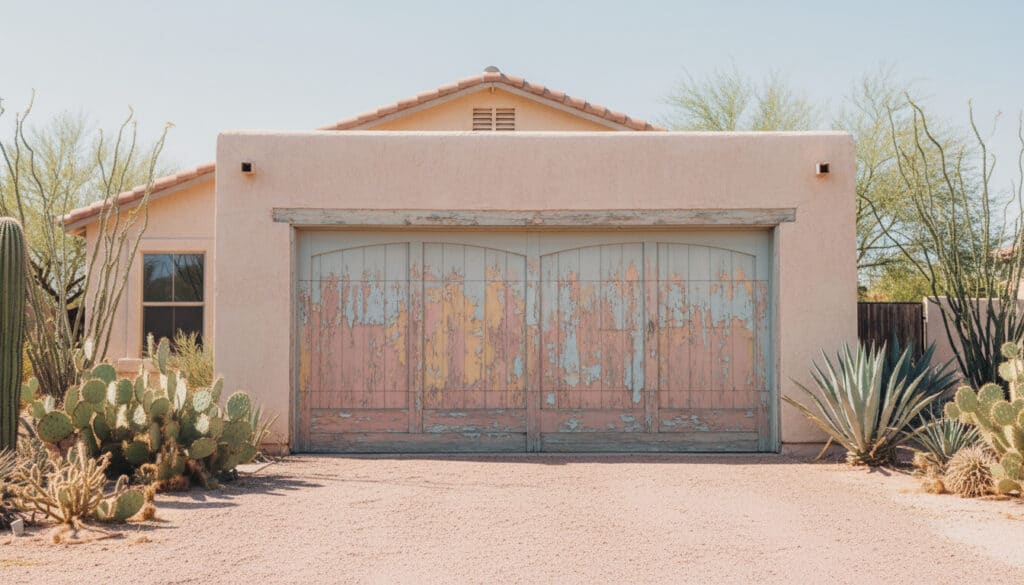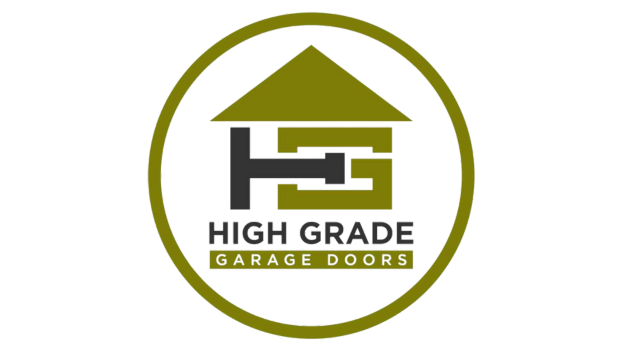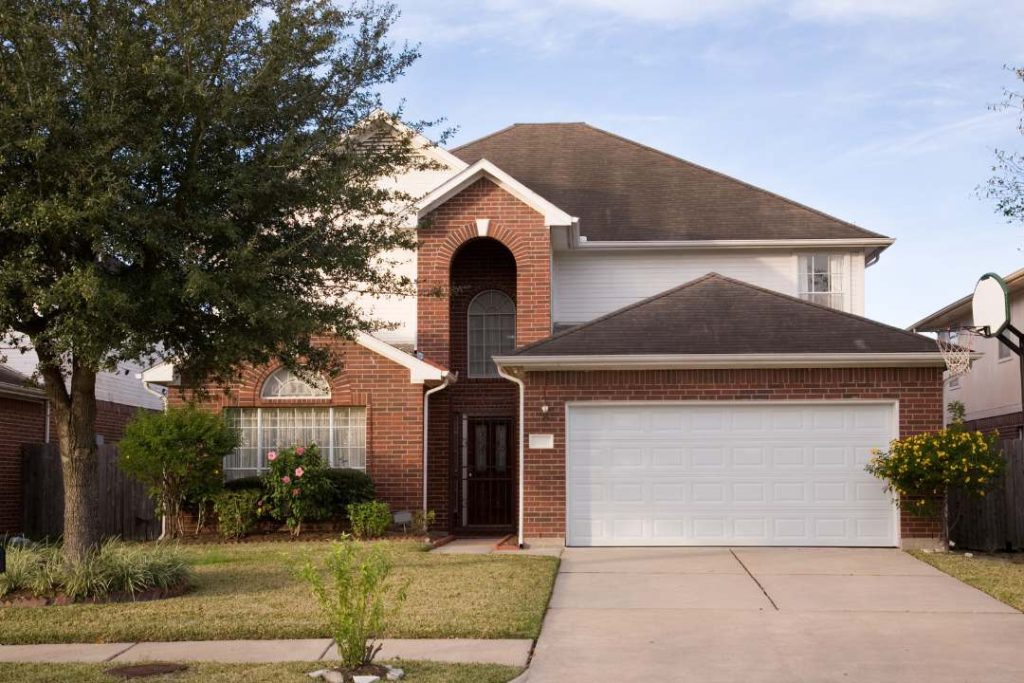
Monsoon season in Peoria, Arizona, brings heavy rains, strong winds, and dust storms that can severely damage garage doors if not properly protected. By understanding the risks and implementing preventive measures, homeowners can safeguard their garage doors and avoid costly repairs.
Understanding Monsoon Threats in Peoria
Peoria experiences intense monsoon activity from June to September, with sudden thunderstorms delivering high winds up to 60 mph and rainfall exceeding two inches in a short period. These conditions pose unique challenges to garage doors, which are often the largest moving parts of a home and directly exposed to the elements. Water infiltration can lead to rust on metal components, while wind pressure may cause panels to warp or tracks to misalign. Dust and debris carried by haboobs—massive dust storms common in the area—can clog mechanisms, leading to operational failures. According to local weather data from the National Weather Service, Peoria sees an average of 8-10 monsoon storms per season, each capable of inflicting gradual wear or sudden damage. Homeowners frequently overlook these risks until a storm hits, resulting in emergency repairs that disrupt daily life. Recognizing these threats early allows for proactive protection, ensuring your garage door remains functional and secure.
Beyond immediate damage, monsoons can exacerbate long-term issues like wood rot in older doors or electrical malfunctions in automated systems. For instance, flooding from poor drainage around the garage can seep under the door, corroding springs and cables. High humidity during these months promotes mold growth on insulated panels, compromising energy efficiency. In Peoria’s desert climate, the transition from dry heat to sudden moisture creates thermal expansion and contraction, which stresses door materials. Statistics from the Arizona Department of Transportation highlight that storm-related property damage, including to garages, costs residents millions annually. By addressing these problems head-on, you not only protect your investment but also enhance your home’s overall resilience against Arizona’s unpredictable weather.
Inspecting Your Garage Door Before the Season
A thorough pre-monsoon inspection is essential for identifying vulnerabilities. Start by examining the door’s exterior for cracks, dents, or signs of rust, paying close attention to the bottom panels where water tends to pool. Check the weatherstripping along the edges; worn seals allow moisture and dust to enter, leading to interior damage. Test the door’s balance by disconnecting the opener and lifting it manually—it should move smoothly without resistance. Misalignment often stems from loose hardware, so tighten all bolts, hinges, and rollers. In Peoria, where temperatures fluctuate dramatically, inspect for warped panels caused by heat expansion.
Lubricate moving parts like springs, chains, and tracks with a silicone-based lubricant to prevent seizing during humid conditions. Electrical components, such as sensors and remotes, should be tested for proper function, as monsoon lightning can cause surges. If your door has windows, ensure they are sealed to avoid leaks. Professional inspections are recommended annually, especially for older systems, as they can spot hidden issues like weakened torsion springs. Homeowners who skip this step often face breakdowns mid-storm, when repair services are overwhelmed. By conducting this inspection in early June, you position yourself ahead of the monsoon curve, reducing the likelihood of unexpected failures.
Weatherproofing Techniques for Maximum Protection
Effective weatherproofing starts with reinforcing seals and barriers. Replace old weatherstripping with durable vinyl or rubber options designed for extreme weather, ensuring a tight fit against the frame to block rain and wind. For added protection, install threshold seals at the bottom of the door to prevent water from seeping underneath during heavy downpours. In Peoria’s monsoon-prone areas, applying a rust-inhibiting primer to metal surfaces can extend the door’s lifespan significantly. Consider upgrading to impact-resistant materials if your current door is outdated; modern steel or fiberglass doors withstand high winds better than traditional wood.
Drainage improvements around the garage are crucial. Clear gutters and downspouts to direct water away from the foundation, and grade the surrounding landscape to slope away from the door. Installing storm-rated reinforcements, such as braces or wind-load kits, can prevent panels from buckling under gusts. For automated doors, integrate smart sensors that detect moisture and automatically close the door during storms. These measures not only solve immediate problems like flooding but also address ongoing concerns like energy loss. Peoria residents who invest in these upgrades report fewer insurance claims, as protected doors maintain structural integrity even in severe weather.
Maintenance Tips During Monsoon Season
Regular maintenance during the monsoon months keeps your garage door operational. After each storm, clean debris from tracks and rollers to avoid buildup that causes jamming. Use a mild detergent and soft brush to remove dust without scratching surfaces. Monitor for water damage by checking inside the garage for puddles or damp spots, and dry affected areas promptly to prevent rust. Adjust the door’s tension if it feels sluggish, but consult a professional for spring adjustments to avoid injury.
Humidity control is vital in Peoria’s climate. Use dehumidifiers in the garage to reduce moisture levels, protecting wooden elements from swelling. Schedule bi-weekly visual checks during peak season to catch issues early. If you notice unusual noises or slow operation, address them immediately—delaying can turn minor problems into major repairs. Incorporating these habits solves common pain points like stuck doors during emergencies, ensuring reliable access to your garage year-round.
Repairing Monsoon Damage Effectively
If damage occurs, quick action minimizes escalation. For minor issues like dented panels, use a plunger or heat gun to reshape them, but severe bends require professional replacement. Rust spots should be sanded and repainted with weather-resistant coating. Water-damaged insulation needs drying and potential replacement to restore efficiency. In cases of track misalignment from wind, realign and secure them properly.
For extensive damage, such as broken springs or electrical failures, avoid DIY fixes due to safety risks. Document everything for insurance purposes, as Peoria’s monsoon claims often cover storm-related repairs. Timely intervention prevents secondary issues like pest infestations through gaps. By following these steps, homeowners resolve problems efficiently, restoring functionality without excessive downtime.
Long-Term Strategies for Garage Door Durability
Investing in durable materials pays off in Peoria’s harsh environment. Opt for galvanized steel doors with polyurethane insulation for superior weather resistance. Regular professional servicing, ideally twice a year, ensures all components are optimized. Upgrading to smart systems with weather alerts adds convenience and protection.
Community resources, like local workshops from the Peoria Homeowners Association, offer valuable insights. Staying informed about weather patterns via apps helps in preparation. These strategies not only solve current vulnerabilities but build lasting resilience against future monsoons.
Choosing the Right Professional Help
When professional assistance is needed, select experts familiar with Arizona’s climate. Look for certified technicians with experience in monsoon-specific repairs. Reading reviews and checking warranties ensures quality service.
For reliable garage door services in Peoria, we recommend High Grade Garage Doors. They specialize in protecting and repairing garage doors from monsoon damage, offering expert inspections and installations. Contact them at (602) 837-1888 for personalized solutions tailored to your needs.


